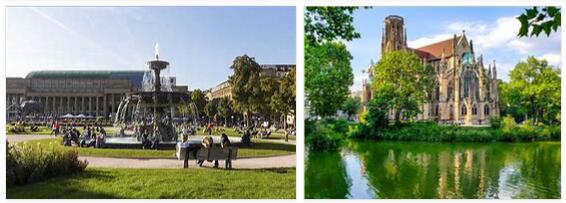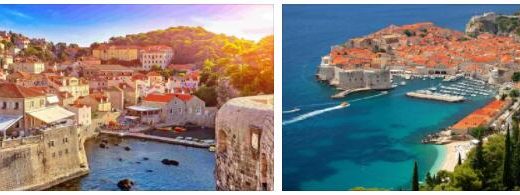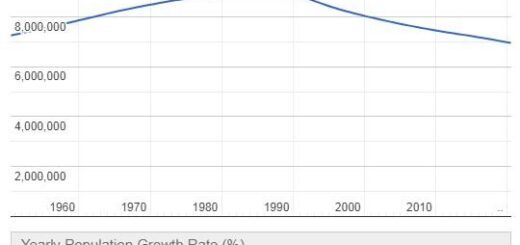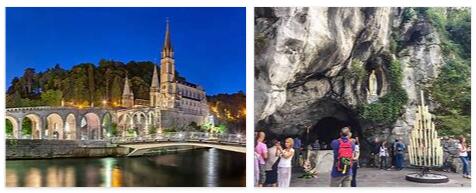Attractions in Stuttgart, Germany
Stuttgart, capital of Baden-Wuerttemberg, with (2019) 635,900 residents.
Stuttgart lies in a wide valley on the middle Neckar and has two universities, museums, theaters and a botanical-zoological garden (“Wilhelma”). As the headquarters of Daimler and Porsche, vehicle construction is the most important branch of industry, followed by electrical engineering. As part of the major “Stuttgart 21” project, the main station has been converted into an underground through station since 2010.
During the Second World War, the old town center was almost completely destroyed, only the area around Schlossplatz and Schillerplatz could at least be partially restored: Old Castle (13th / 14th century, rebuilt in 1553) and New Castle (18th century) as well as the collegiate church (14th-16th century). With the Weißenhofsiedlung (1927), Stuttgart has a famous example of early modernism.
Stuttgart was first mentioned around 1160, and in 1482 it became the royal seat of Württemberg.
Attractions
During the Second World War, the old town center was almost completely destroyed, only the area around Schlossplatz and Schillerplatz could at least be partially restored. The old castle (13th to 14th century core), built around 1320 as a moated castle, was expanded from 1553 to a representative four-wing complex with round corner towers, three-story arcade courtyard and post-Gothic castle chapel (consecrated in 1562); The Württemberg State Museum is located in the castle (including a collection of antiquities, European handicrafts, the ducal art chamber, finds from the prince’s grave in Hochdorf). The Old Chancellery (1543), the Prinzenbau (17th / 18th century; Ministry of Justice), the fruit box with musical instrument museum (1592) and the Schiller Monument (1839, by B. Thorvaldsen) are on Schillerplatz) and the collegiate church with its unequal pair of towers (of the late Gothic hall from the 14th / 15th century, only the choir was reconstructed in 1953 after being destroyed in the war, the nave was modernized in 1958). The New Palace (today ministries) was started in 1746 by L. Retti and L. de la Guêpière as a three-wing court of honor, opposite, on the palace square, is the late classicist column facade of the royal building (1855–59).
Late Gothic churches are Sankt Leonhard (1463–74) and the Dominican (hospital) church (1471–93) with a crucifixion group (1502). In the 19th century the Wilhelmspalais (1834–40; until 2011 city library, since 2018 city museum), the buildings of the »Wilhelma« (1842–53, in the Moorish style with a classicist theater), the Villa Berg (1844–53, in the neo-Romanesque style) were built Style). The Protestant Church of the Redeemer was built in 1906-08 by T. Fischer. The neoclassical Great House, built in 1907–12 as the Royal Opera, was modernized to purify it in 1956, and the original decoration was reconstructed in 1983/84. The main station with the 57 m high tower was built in 1913-27.
With the Weißenhofsiedlung (1927; partly UNESCO World Heritage Site since 2016) and the Tagblatt Tower (1927–28), Stuttgart has outstanding early modern buildings. As a reaction to the Weißenhofsiedlung, the settlement “Am Kocherhof” (1933, by P. Schmitthenner and others) was also built on the Killesberg. The 1950s are with the television tower in Stuttgart-Degerloch (1954–55), the “Romeo and Juliet” residential buildings in Stuttgart-Zuffenhausen (1954–59, by H. Scharoun) and the “Liederhalle” concert hall (1954–56, by R. Gutbrod et al., 1993 ff. extension to the culture and congress center) in the inner-city area. The building of the state parliament was built in 1960–61.
The southern part of the old town, the »Bohnenviertel«, was reactivated as a residential area from 1977–82, the »Calwer Passage« was designed from 1974–79 and the Königsstraße from 1973–80 by G. Behnisch et al. redesigned to a pedestrian zone; The study center of the Evangelical Church (1977–79) and the Hysolar research and institute building of the university (1987) were designed by the same architect. A representative new building (opened in 2005, by Hascher & Jehle) was built on Kleiner Schlossplatz for the Stuttgart Art Museum (formerly the Stuttgart City Gallery). The Staatsgalerie (built 1838–42, with European painting from the 14th – 20th centuries and the graphic collection) was expanded by J. F. Stirling from 1977–84 (Neue Staatsgalerie). Stirling also created the design for the new building for the State University for Music and Performing Arts (1992–2002). The »Meeting Point Rotebühlplatz«, home of the adult education center, music school, media library and others, was completed in 1992. The Waldorf School Center on Uhlandshöhe (since 1919) has buildings by Gutbrod, H. Billing and others.
Eiermann built the IBM headquarters in Stuttgart-Vaihingen (1967–72). The headquarters of Züblin AG (1982–85) was established between Stuttgart-Vaihingen and Möhringen in a rapidly growing office and commercial area. – In the Hohenheim district there is the classicist palace (1785–97, today university) with a 500 m long garden front. The Solitude pleasure palace is located in the west of Stuttgart.
The architecture office Gerkan, Marg & Partner carried out the modernization and expansion of the airport terminal from 1987-90. With the building exhibition “Expo Wohnen 2000”, experimental buildings by various architects were created in 1993. The first construction phase with four office buildings and a 60 m high glass office tower at the northern entrance to the city center was completed in 2004 as part of the urban development project “Stuttgart 21” on a former track area at the main train station (construction 1999 ff.). The design for the construction of the new main station, which has been under construction since 2010, was developed by the Düsseldorf architects Ingenhoven, Overdieck und Partner in collaboration with Frei Otto.



